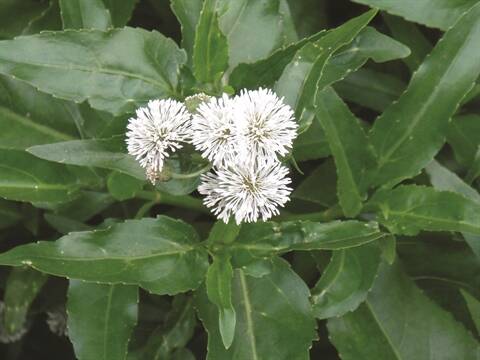
It’s a contentious subject that has community members concerned for their health.
Subscribe now for unlimited access.
$0/
(min cost $0)
or signup to continue reading
MidCoast Council has begun herbicide spraying along the banks of the Barrington, Gloucester and Upper Manning rivers for the Senegal tea plant.
Council’s strategic weeds biosecurity officer Terry Inkson said the work is necessary to eradicate the weed.
“The Senegal tea plant is a weed of limited distribution in NSW,” he said.
“The plant currently infests patches along 80 kilometres of streambanks in the Manning River catchment and is negatively impacting parts of the Barrington, Gloucester and Manning rivers.
“We are undertaking spraying at various locations along the banks of these rivers from the lower Barrington to the Bight Bridge at Wingham.
“We have two teams undertaking the spraying and in ideal conditions it is expected to take 18 working days to complete the length of the stream banks required, however this can be impacted by weather,” Mr Inkson said.
Some residents claim they were not properly notified about the spraying or were not told the exact location of the works.
Mr Inkson said council has used the same method to manage the plant on some sections of the Manning River catchment since 2011.
“We undertake two treatments of the infested areas per year.
“Council notifies residents by letter of our plans to spray the Senegal tea plant.
“Our weeds officers have also door knocked and conducted inspections under the Noxious Weeds Act 1993 and Biosecurity Act 2015, to provide as much information to as many residents as possible directly affected by the Senegal tea plant.
“We are happy to talk with landholders at any time about both the weed and our management program.
“The spraying program is also advertised in the Manning River Times, Great Lakes Advocate and Gloucester Advocate.
“Under the licence issued to council to spray near waterways, we are required to give two days’ notice to land holders,” Mr Inkson said.
As a precaution, residents are advised to refrain from using, drinking or swimming in the water for 96 hours (or four days) following treatment.
“We recognise this is an issue and we are currently developing a notification system to more accurately notify residents when treatments will be occurring along specific sections of the river,” Mr Inkson said.
One of the herbicides used in the works contains glyphosate. The chemical has been debated publicly in recent times with claims it can cause cancer in humans.
The Gloucester Environment Group has condemned council for going ahead with the project, arguing that the chemical’s effects have not been determined.
“We call on the council to not use glyphosate spray unless and until all doubts about its risks to human health have been removed by a proper independent study.
“No spraying should take place until all issues have been properly addressed and those using the river water have been properly consulted,” the group said in a statement.
Mr Inkson said council is aware of the issues surrounding the chemical.
“We only use chemicals currently approved for use by the national regulator, the Australian Pesticide and Veterinary Medicines Authority.
“Pesticides are assessed and registered by the Australian Pesticide and Veterinary Medicines Authority before they are permitted to be used in NSW.
“They regularly review the toxicology of glyphosate and its use in Australia and their current stance is that registered use of glyphosate in Australia, as per label instructions, is safe.
“The NSW Environment Protection Authority (EPA) regulates the proper use of pesticides through the provisions of the Pesticides Act 1999 and associated regulations. Many Commonwealth and NSW government agencies, as well as other stakeholder organisations, have a role in managing pesticides in NSW.
“Council maintains an environmental protection licence issued by EPA under the Protection of the Environment Operations Act to spray over or near water.
“All pesticides are used in accordance with the label and permit requirements.
“We continually keep up to date with advancement in pest plant technology and work with NSW Department of Primary Industries (DPI), the Hunter Weeds Advisory Group and other weed scientists,” Mr Inkson said.
The plant was first discovered in the Gloucester area in 2012. It is one of 28 weeds on the Australian Government’s National Environmental Alert List.

